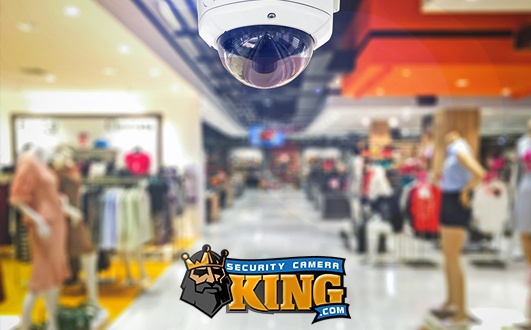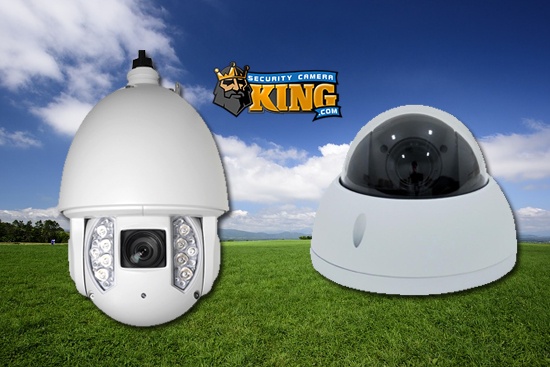Which NVR is best for Me?
At security camera king we often get asked “Which NVR is right for me? One with Onboard POE, or external cameras on a POE switch?”
This is an excellent question, and first takes a bit of understanding of what an NVR even is. An NVR is a Network Video Recorder. NVRs are the newest kind of Video Recorder device for CCTV available, and are a successor to the DVR, or “digital video Recorder”. While DVRs can use COAX cameras, and sometimes accept remote IP cameras, NVR’s are only able to use IP cameras. You might wonder then, “why would I want an NVR over a DVR?” Simply put NVRs are more powerful and better at working with large numbers of high-resolution cameras while also performing advanced AI features This is due in no small part to the fact that NVrs don’t have to do much if any of the encoding work for incoming video. IP cameras actually handle this themselves, and simply transmit the already encoded data to an NVR. DVRs have to do this work themselves, and because of this, have less processing power available for other features. So if you’re going IP with the idea that you’ll want a lot more features and a snappier system, use an NVR.
Now, on to the real question at hand, “Which NVr should I use between onboard POE and External Camera systems?” Both onboard POE NVRs, and Remote only NVRs are potential solutions for powering and networking IP cameras. Is there an honest and clear winner when discussing these two technology options? We set out to figure out if there is in fact a clear-cut winner and the result might just surprise you. Again we come to a crossroads where we need to understand the differences here, and to start what POE is.
POE is an acronym that stands for Power Over Ethernet. Poe is currently the primary way to do get power to IP cameras, and additionally, transmit their data all over a single cat5e or cat6 ethernet cable. In the past, most cameras used at any given location were COAX cameras for use with DVRs. COAX cameras will always require separate cabling for their power, and for their video data, possibly even a third cable if there was audio, and even a fourth cable for PTZ functions. That’s a lot of wiring!
So POE is clearly the winner in terms of cost-effectiveness for cable running materials and labor, so then what i the merits of an onboard POE NVr vs one that does not use onboard POE?
Onboard POE NVRs will have anywhere from 4 to 16 ports embedded, which are POE ports capable of outputting standard POE power. There are also some NVRs that can do POE+ which is a bit more power than standard POE, but these are less common. The benefit of one of these recorders is that they often present a very plug-and-play experience as opposed to a POE switch-based setup. For smaller businesses or residences, an onboard POE NVR is usually a great idea. It also guarantees that your camera will be isolated, and not part of the regular ISP network provided to most small businesses and residences. These smaller network hardware given out by most ISP for more basic connections don’t handle the constant traffic of camera data as well as a dedicated network. Having those cam’s data handled by the dedicated networking hardware within the recorder can greatly help. Further, the initial setup for these systems is usually made simpler by the NVRs auto configuration. It will give an IP address to each camera, and initialize them if they are new.
There are some drawbacks to these types of NVRs though if you need more dynamic control over your camera system. Firstly, they tend to max out around 16 onboard cameras, and you’ll end up having to use external POE switches anyway for those that support more cams, but only have 16 ports. Secondly, you will not be able to access any of the cameras individually under normal circumstances. This is because the cameras aren’t on the main network but on the NVRs private network. For small systems with simple setups, this is basically a non-issue. However for those who need to access complex AI configurations, set up camera databases, manage onboard SD cards, an onboard POE setup fails to deliver compared to using POE switches.
A POE switch is like any other network switch, expanding the available ethernet ports to access a given network. POE switches however also provide power over ethernet as their name implies. This means you can connect cameras to these switches, and add them to a recorder over the network. This allows you to also access each camera individually via that same network and manipulate their settings from their individual interfaces. If done correctly it’s possible to set this up on a privatized network also, which can be accessed by a properly configured PC to see the cameras when no other network can. This type of setup is far less plug and play, and requires a decent understanding or background in Computer networking hardware, software, and terminologies. It also helps to have experience in CCTV, so if you’re going to consider this kind of setup, make sure you or someone you work with is knowledgeable in these fields.
So as explained, better is a subjective term and both of these types of setups have their pros and cons. Onboard POE is better for smaller installations that need fewer complex features due to its convenience, and close to plug and play setup. External POE switch setups are better for larger systems or more advanced users that need dedicated access to their cameras.
Thanks for joining us today as we talked about power over Ethernet technology for IP cameras! For any questions on product compatibility, availability or any other information don’t hesitate to give our Sales Pro’s a call at 561-288-5258 . Don’t forget to subscribe to our YouTube Channel for more Tutorials and CCTV info. Until Next time, Stay Safe!
Related: What’s the difference between DVR and NVR?
Related: What’s the difference between H264 and H265?
Related: IP PTZ Security Cameras – All There is to Know
Related: Resolution, and why does it matter?
Related: What are active deterrence cameras?
Find Us On: Facebook | Twitter | YouTube












